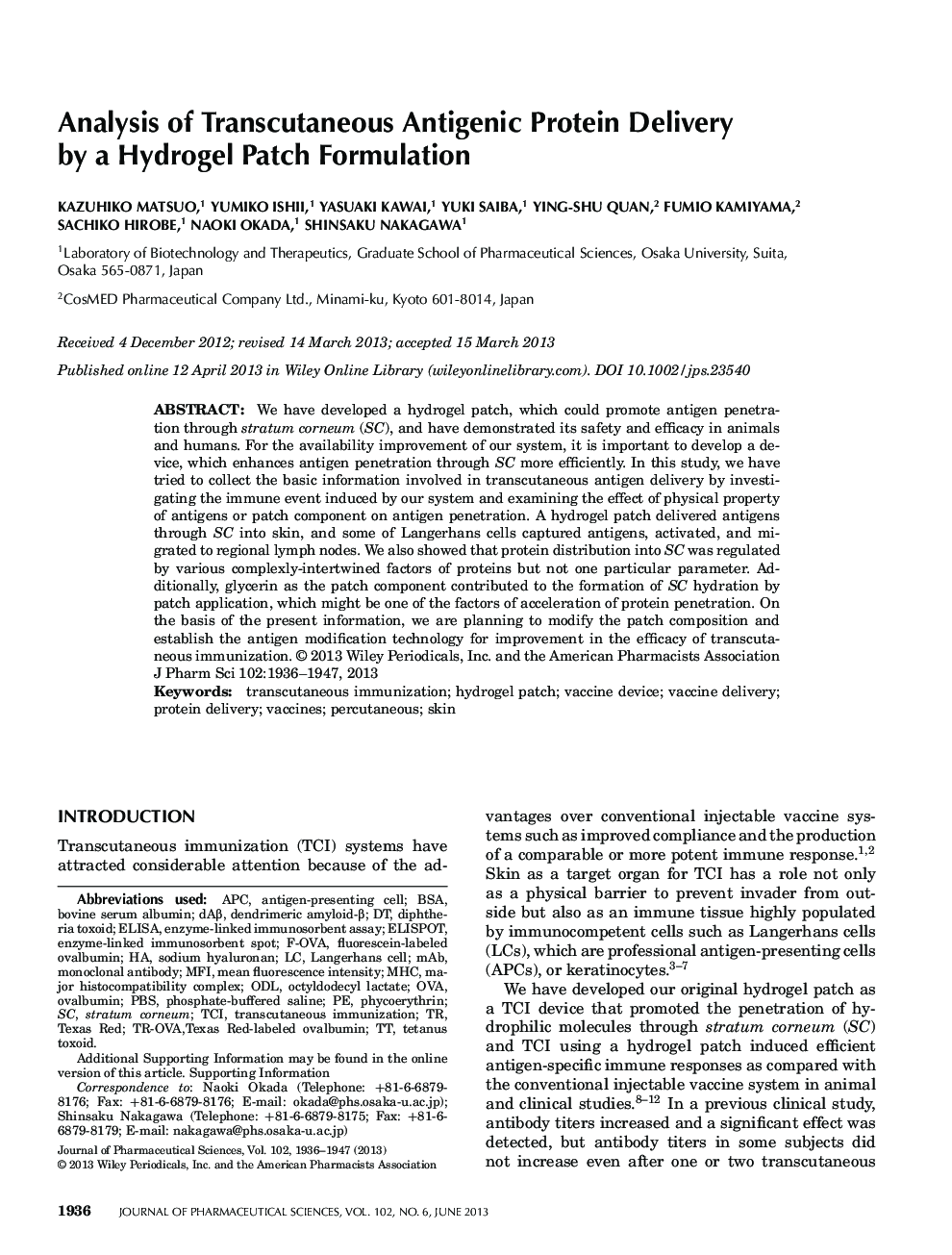| Article ID | Journal | Published Year | Pages | File Type |
|---|---|---|---|---|
| 2484989 | Journal of Pharmaceutical Sciences | 2013 | 12 Pages |
Abstract
We have developed a hydrogel patch, which could promote antigen penetration through stratum corneum (SC), and have demonstrated its safety and efficacy in animals and humans. For the availability improvement of our system, it is important to develop a device, which enhances antigen penetration through SC more efficiently. In this study, we have tried to collect the basic information involved in transcutaneous antigen delivery by investigating the immune event induced by our system and examining the effect of physical property of antigens or patch component on antigen penetration. A hydrogel patch delivered antigens through SC into skin, and some of Langerhans cells captured antigens, activated, and migrated to regional lymph nodes. We also showed that protein distribution into SC was regulated by various complexly-intertwined factors of proteins but not one particular parameter. Additionally, glycerin as the patch component contributed to the formation of SC hydration by patch application, which might be one of the factors of acceleration of protein penetration. On the basis of the present information, we are planning to modify the patch composition and establish the antigen modification technology for improvement in the efficacy of transcuta-neous immunization. © 2013 Wiley Periodicals, Inc. and the American Pharmacists Association J Pharm Sci 102:1936-1947, 2013
Related Topics
Health Sciences
Pharmacology, Toxicology and Pharmaceutical Science
Drug Discovery
Authors
Kazuhiko Matsuo, Yumiko Ishii, Yasuaki Kawai, Yuki Saiba, Ying-Shu Quan, Fumio Kamiyama, Sachiko Hirobe, Naoki Okada, Shinsaku Nakagawa,
